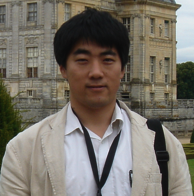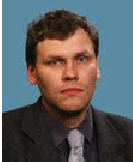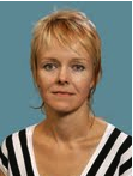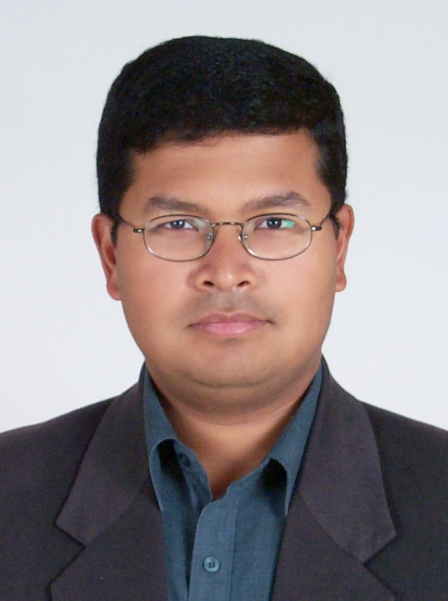NWeSP 2010 - Plenary Speakers

Plenary 1: Srinivas
Padmanabhuni, SETLabs, Infosys, Bangalore, India
Title: "The five frontiers of
Web Computing: Social, Cloud, Pervasive and Semantic Perspectives"
Abstract: The talk will
focus on latest trends in extensions of the current form of World Wide
Web, as we know it. The talk will cover the following 5 dimensions:
1. Social Extension to Web
2. Cloud Architectures
3. Pervasive Computing
4. Semantic Web
5. Immersive and Accessible Web
In these diverse but increasingly relevant perspectives on
evolution of web, the technical perspectives of the relevant challenges
in adopting these within enterprise context shall be examined, with a
coverage of relevant technologies, information formats and standards
involved thereof. These emergent extensions of web are
increasingly shaping tomorrow's enterprise, and consumers alike, and
bringing technology closer to our lines. We shall present a
compelling argument for deeper focus, and investigation into the
interplay of these separate web evolution trends, via relevant
demonstrator use cases, in the process outlining several
accompanying challenges for the research community.
Biography: Dr. Srinivas
Padmanabhuni is a Principal Researcher at Software Engineering and
Technology Labs (SETLabs), the R and D arm of Infosys Technologies
Limited, Bangalore, India. He heads the SOA centre of excellence at
SETLabs, Infosys. Dr. Srinivas specializes in Software Engineering
aspects related to Global Software Development, Web services, Service
Oriented Architecture, Business Process Management, and Cloud computing
technologies alongside pursuing interests in semantic web, autonomic
computing, intelligent agents, and enterprise architecture. He has been
selected for Who's Who in Asia 2007 first edition, in addition to being
nominated for Who is Who in the World and Americas 2009 editions. He
serves on editorial board of journals and program committees for
international conferences in area of web services, SOA, and Software
Engineering. He has authored several papers in international
conferences including AAAI, ICWS, SCC, GITMA, APSEC,ISEC, and others.
He is currently the chairperson of ACM Bangalore chapter. He has served
on program committees for several international conferences and
workshops including ICWS (International Conference of Web Services),
PricAI (Pacific Rim International Conference on AI), NWeSP
(International Conference on Next Generation Web Services Practices),
Indian Conference on Software Engineering (ICSE) etc. He has given
numerous invited speeches at varied industry and academic forums
including IEEE and ACM forums, industry CIO seminars like MINDEF CIO
Summit, conferences including APSEC, ICWA etc. and architect forums
like IASA. He has also authored books and book chapters and articles in
some leading professional journals. A book authored by him on
Distributed Systems Security, covering SOA security, is due to come out
in 2009 by Wiley Press.
Additionally he has filed for multiple patents in the areas of SOA.
Prior to Infosys, Dr. Srinivas has worked in multiple capacities in
startups out of Canada and USA. Dr. Srinivas holds a doctorate degree
in computing science from University of Alberta, Edmonton, Canada.
Prior to Ph.D. he secured his B.Tech and M.Tech in computer science
from Indian Institutes of Technology at Kanpur and Mumbai respectively.

Plenary 2: Weisen Guo, The University of Tokyo, Japan
Title: Matching and Mining in Semantic Graph Data Set Represented by OWL-DL Ontology
Abstract: Semantic Web methods
and technologies provide a formal description of concepts, terms, and
relationships within a given knowledge domain. The Web Ontology
Language (OWL) can be used to describe the knowledge resources within a
given knowledge domain. OWL-DL is one of the three OWL sublanguages.
Description Logics (DL) are a family of formal knowledge representation
languages. A DL knowledge base contains the TBox (terminological box)
that describes concept hierarchies and relationships between concepts,
and the ABox (assertional box) that states where in the hierarchy
individuals belong and the relationships between individuals. Within a
given knowledge domain, we can create an OWL-DL ontology as the domain
ontology. Using this ontology we can create a description (we called
semantic graph) for a knowledge resource, such as a scientific article.
For the semantic graphs are computer-understandable, we can do matching
and mining on this kind of data in a semantics way.
Semantic matching is the technique to evaluate the semantic similarity
of two semantic graphs. Based on the characteristics of the semantic
graph data, we presented a matching approach that obtains a matching
score between semantic graphs. There dimensions are considered in this
approach: matching granularity, similarity scale for instance classes,
and logic similarity scale. In order to match two semantic graphs, a
five-step method is presented: creation of atomic queries,
generalization of queries, addition of rules, evaluation of queries and
semantic graphs, and matching score calculation.
Semantic mining is the technique to mine useful patterns from the
semantic graph data set. We presented an approach to mine a specific
type pattern, relationship associations, from the semantic graph data
set. A relationship association is a form of knowledge generalization
that is based on binary relationships between instances in semantic
graphs. Specifically, relationship associations involve two binary
relationships that share a connecting instance and that co-occur
frequently in a semantic graph data set. In order to mine relationship
associations, a six-step method is presented: generating triple
queries, evaluating supports of triple queries, generating relationship
association queries, removing duplicate relationship association
queries, evaluating supports of relationship association queries,
selecting interesting relationship associations.
For the semantic graph data represented by OWL-DL ontology is complex
and a new kind of data, there are many open problems need to be solved.
Currently, we are studying more reasonable semantic matching methods
and more general semantic graph pattern mining algorithms.
Biography: Weisen Guo is a
project researcher in the Science Integration Program (Human) in the
Department of Frontier Sciences and Science Integration in the Division
of Project Coordination at the University of Tokyo. He holds a PhD in
Management Science and Technology from the Dalian University of
Technology, China. He has served as a lecturer of the Institute of
Systems Engineering in the Management School at the Dalian University
of Technology, and as an adjunct project manager of the Projects and
Results Management Office in the Planning Bureau at the National
Natural Science Foundation of China. He has published over 40 refereed
papers in various journals and conferences including AEMB, IJKSS, ICDM,
ICKM, LBM, ASIST&T, KDIR, CASoN, MLG, JOHO-KANRI, AWIC, ISWC, and
KSS. He served as a program committee member at numerous international
conferences including ICKM 2009, KSS 2009, MCS 2010, and BIOINFORMATICS
2011. He has received two grants from the National Natural Science
Foundation of China and the Liaoning Province Science and Technology
Agency of China. His research interests include Semantic Web
technology, graph mining, knowledge science and technology, information
system engineering.


Plenary 3: Jiří Dvorský and Eliska Ochodkova, VSB - Technical University of Ostrava, Czech Republic
Title: The Statistical Properties of Large Quasigroups
Abstract: With the growing
importance of data security a growing effort to find new approaches to
the cryptographic algorithms designs appears. One of the trends is to
research the use of other algebraic structures than the traditional,
such as a quasigroup. Quasigroups are equivalent to the more familiar
Latin squares. There are many characteristics that must quasigroups
have from the cryptography point of view. They have to be
non-commutative, non-associative, non-idempotent and so on. If one want
to work with quasigroups of a large order, effective methods of testing
their properties are necessary. We present several experiments on
various types of guasigroups and their results. We also propose a new
classification of quasigroups based upon strings (product elements)
obtained by a product of a sequence. Next we propose using of genetic
algorithm to evolve quasigroups with good pseudorandom properties.
Biography: Jiří Dvorský
received his Ph.D. in Computer Science from Charles University in
Prague, Czech Republic, in 2004. His dissertation was on data
compression. He is currently senior lecturer at VSB – Technical
University of Ostrava where he teaches classes in computer programming.
Specific research interests include data compression, artificial neural
networks, usage of neural networks in electric power industry. He is
currently working on project “Artifical neural network in Geographic
Information Systems”.

Plenary 4: Aditya K. Ghose, University of Wollongong, Australia
Title: Business service modeling and analysis: The view through an alternative service-centric lens
Biography: Professor Ghose
holds PhD and MSc degrees in Computing Science from the University of
Alberta, Canada (he also spent parts of his PhD candidature at the
Beckman Institute, University of Illinois at Urbana Champaign and the
University of Tokyo) and a Bachelor of Engineering degree in Computer
Science and Engineering from Jadavpur University, Kolkata, India. While
at the University of Alberta, he received the Jeffrey Sampson Memorial
Award. . His research is (or has been) funded by the Australian
Research Council, the Canadian Natural Sciences and Engineering
Research Council, the Japanese Institute for Advanced Information
Technology (AITEC) and various Australian government agencies as well
as companies such as Bluescope Steel, CSC, Holocentric and Pillar
Administration. His research has been published in the top venues in
service-oriented computing (SCC and ICSOC), software modelling (ER),
software evolution (IWSSD, IWPSE) and AI (Artificial Intelligence
Journal, AAAI, AAMAS and ECAI). He has been an invited speaker at the
Schloss Dagstuhl Seminar Series in Germany and the Banff International
Research Station in Canada. He has also been a keynote speaker at
several conferences, and program/general chair of several others. He is
a senior technical advisor to several companies in the areas of
constraint programming and business process management, both in
Australia and Canada. He reviews for well-regarded journals such as
Artificial Intelligence, the IBM Systems Journal and the Journal of
Autonomous Agents and Multi-Agent Systems, serves as assessor
(Ozreader) for the Australian Research Council and as an external
reviewer for the Natural Sciences and Engineering Research Council
(NSERC) of Canada and the Science Foundation of Ireland. Professor
Ghose is a Research Leader in the Australian Cooperative Research
Centre for Smart Services, Co-Director of the Centre for Oncology
Informatics at the Illawarra Health and Medical Research Institute,
Co-Leader of the University of Wollongong Carbon-Centric Computing
Initiative and Co-Convenor of the Australian Computer Society NSW SIG
on Green ICT. He is also Vice-President of CORE, Australia's apex body
for computing academics.




